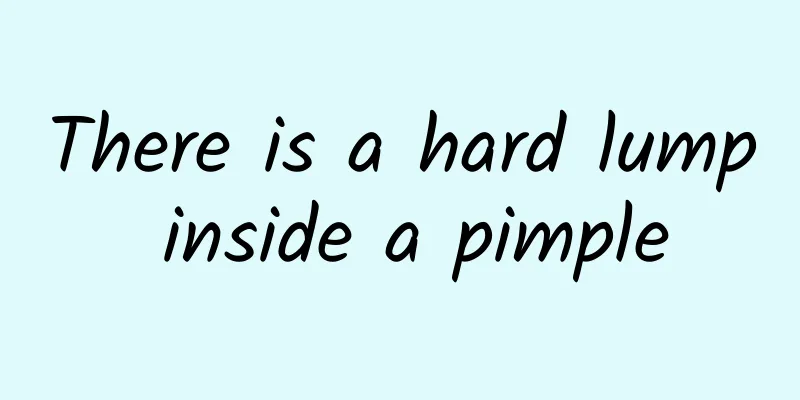Why do blisters appear after applying plaster?

|
Plaster is also a common topical medication. If blisters appear when applying the plaster, there are many reasons. It may be that the medicine has achieved a good effect and has a moisture-removing effect. Of course, skin allergies cannot be ruled out, which often causes symptoms of redness, swelling and itching on the skin. When using plasters, be sure to choose regular medicines and understand the matters concerning medication. Precautions and contraindications for daily plaster application Unsuitable places Although the use of plasters is very flexible and can basically be applied wherever there is a problem, it should not be applied on the head and face, especially near the eyes, mouth and nose. Another thing to be reminded is that you should avoid areas with a lot of hair. If the area where you want to apply the plaster is full of dense hair, it is best to shave off the hair with a medical razor before applying the plaster. Otherwise, it will affect the absorption of the medicine, it will not stick to the skin, and it will cause pain when removing the plaster and causing hair to be pulled up. "Universal" is not appropriate Each plaster has its own unique pharmacological effect and cannot be used universally. For example, for chronic low back pain and bruises caused by wind and cold, dog skin plaster or wind-chasing plaster can be used to dispel cold and wind, relax muscles and activate blood circulation, and relieve pain; for carbuncles caused by heat and toxic accumulation, which have nodules that do not disappear, redness, swelling, pain, and pus that does not ulcerate at the beginning, you can use detoxifying ointment to remove toxins, reduce swelling, remove dead tissue and regenerate new tissue; adhesive plasters have anti-inflammatory and analgesic effects, and have certain therapeutic effects on rheumatism, low back pain, muscle pain, sprains, bruises, etc.; the heart-saving ointment is a plaster made of traditional Chinese medicine that activates blood circulation, removes stasis, and removes moisture, such as musk, borneol, safflower, frankincense, myrrh, etc., plus nitroglycerin. Once symptoms of angina pectoris appear, immediately take a piece and stick it on the precordial area. Generally, the angina pectoris can be relieved after 5 to 6 minutes. The method must be correct Before applying the plaster, you should wipe the skin of the affected area or acupoint clean and dry with a hot towel or ginger slices, and then apply it. When the weather is cold in winter, rubber plasters are often difficult to stick. At this time, you can apply the plaster with a hot water bag after applying it to ensure that it sticks firmly and increase the therapeutic effect. There are also requirements for the baking method. If you use a black plaster, you should first heat the plaster over a low flame such as an alcohol lamp or candle, or float it on boiling water to soften it. Wait until the baked plaster does not burn the skin before applying it to the affected area. Choose the right part Find the pain point first. When pasting, first separate a part of the plaster and the pad, stick it near the most painful area, and tear off the pad while sticking along the direction of the pain point. This can accurately place the center of the plaster on the painful point and make the plaster stick smoothly without wrinkles. Otherwise, inaccurate application position will affect the efficacy. Allergy can not be applied "If you feel itching, burning or stinging on the skin where the plaster is applied about 10 minutes after applying it, you should remove it immediately. This means that the patient is allergic to the plaster." Wang Sujun said that people with allergies usually should not apply plasters because their skin is prone to rashes. Applying plasters will not only hinder the absorption of the drug, but will also cause skin problems. No more than 24 hours Since plasters are used on the skin surface, they usually contain medicines with strong odors. They are applied to the body surface to stimulate nerve endings, dilate blood vessels through reflexes, promote local blood circulation, improve nutrition of surrounding tissues, and achieve the purpose of reducing swelling, inflammation, and analgesia. Generally, a dose of plaster should not be used for more than 24 hours. If it is used for too long, not only will the medicine lose its effectiveness, but it will also be bad for the skin. Don't break the bubbles If the skin where the plaster was applied becomes red, swollen and blistered, try not to break the blisters. Apply sterilized gauze on them and let the blisters subside on their own. If the blisters appear in places that are easily broken, you need to go to the hospital and ask professionals to prick them and apply medicine. Do not move the outer skin of the blister, cover it with sterilized gauze, and wait for it to heal on its own. |
<<: Does taking medicine affect pregnancy?
Recommend
How to relieve the pain of quitting smoking
Why do many people who quit smoking relapse? The ...
What are the effects of Artemisia selengensis?
Many Chinese medicine prescriptions contain Chine...
Why does a pregnant woman’s tongue coating turn yellow? what to do?
Yellow tongue coating is a relatively common phen...
Psychoanalytic therapy
I believe that everyone must be very unfamiliar w...
Can I eat eggs if I have bronchial asthma?
With the increase in exhaust gas and industrial g...
What are the requirements for the color of cupping
Cupping, as a term in traditional Chinese medicin...
What is the reason why the tip of a child’s tongue is red?
Children's oral health is very easy to be dama...
Why is my chest hurting?
For many female friends, they must have experienc...
What should I check if I haven't gotten pregnant for half a year?
Many couples who want to have children will prepa...
How to detox after hysterectomy
Because of uterine fibroids or cervical cancer, a...
What is the function of hot salt compress?
As for hot compress, I believe most of us have us...
Why are there small pits on the nails? What's going on?
To determine whether a person suffers from a cert...
Sequelae of gas poisoning
The main cause of gas poisoning in daily life is ...
Pain in the left lower rib cage
Pain inside the rib cage on the lower left side o...
Myofibroblastoma survival rate
Myofibroblastoma is a relatively serious disease....









